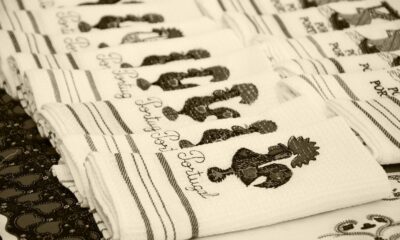Fashion
Burberry: Rock ‘n’ roll revamped
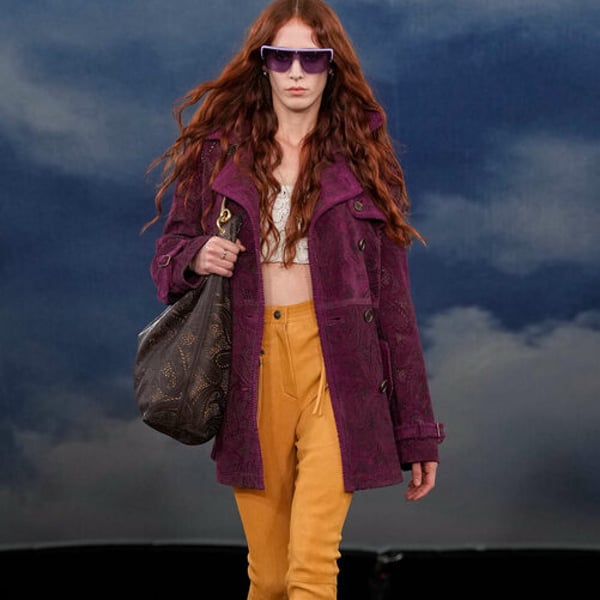
Published
September 22, 2025
Burberry climaxed the five-day London Fashion Week Monday night with a cool and concise rock ‘n’ roll revival show that refreshed the marque with plenty of punch and polish.
Staged inside a tent in the northwest corner of Hyde Park, the show attracted a great front row: Jason Statham and Rosie Huntington-Whiteley; rapper Skepta and soccer legend, Ian Wright; Elton John and David Furnish; songstress Raye and soul singer, Olivia Dean.
Designer Daniel Lee’s intention was clear from the opening looks and chords: a bright waxed plaid trench dress worn with rugged boots on a model with Marianne Faithfull hair; followed by a waxed denim trench on a guy with a Hendrix afro. The soundtrack: a great booming remix of “Planet Caravan” by Black Sabbath. A band that Lee’s Harley Davidson-riding dad adored, and whose singer Ozzy Osborne recently passed this year.
Matter of fact, not a single ensemble would look out of place on a rock star: from the dolly bird white moulded A-line cocktails finished in chains and golden or turquoise macramé party sheathes for gals. To suede lace Lothario rocker trenches for guys, to some seriously crisp suits, cut with peg legs and snug jackets.
Lee kept the brand’s plaid theme going with great waxed parkas, girly pants or military boots. Leather posh hippie spy coats and bags with long fringes, all looked great as the Black Sabbath montage, including “You Won’t Change Me”, boomed out.
Like the collection, the palette had plenty of kick: acid green, salmon pink, bitter yellow; attention- seeking, but all the better for that.
“Summertime in the UK is so synonymous with music culture. This year felt extra special, with the Oasis tour, Beyoncé at Glastonbury, Kendrick was here. Every few days incredible music at festivals, and the Beatles movie is coming up. But it was a wonderful mod ballet at Saddler’s Well that first got me thinking how to celebrate that… Musicians have always had incredible style, and I wanted that exchange between music and fashion,” Lee explained backstage.
Underlining his goal is to make clothes that require skill to produce and evoke emotion. “It’s what separates luxury from great UK high street labels, skill and know-how and making historic techniques relevant for today,” Daniel added.
The overall look was perhaps not so path-breaking. Nonetheless collectively the collection – with its unexpected techniques – seemed very of the moment. Just right for today.
The show comes at a delicate moment for Burberry, the United Kingdom’s leading luxury brand, Burberry suffered a 15% decline in annual revenue in the 12 months ending March 29 to £2,461 million, while operating profit plummeted over 90% to a mere £26 million. This collection, however, seemed very commercially savvy, and timely.
The night before, the house unveiled its latest retail concept, Scarf Bar, whose debut space was inside Burberry’s giant Regent Street flagship.
“Scarf Bar offers 200 styles of Burberry scarves, from heritage to new creations. We plan to open 30 Scarf Bars in the next three months,” beamed CEO Joshua Schulman, who joined Burberry 15 months ago in July, 2024.
Offering a great selection of classic and punchier new plaids, made in a selection of materials: cashmere, mohair, wool and silk, or mixes of all four. Situated on the south side of the store, the Scarf Bar cleverly utilizes a slightly forgotten retail space that opens out on to Vigo Street. It’s also a smart example of Schulman – a veteran retailer with experience at department store giant Neiman Marcus.
Schulman, according to UK media reports, is the highest paid luxury executive in Britain. The 52-year-old Los Angeles-born Schulman, who was also previously CEO of Michael Kors, Coach and Jimmy Choo, reputedly has an annual salary of £2.6 million.
Since arriving, Schulman has ordered a reset, and in May unveiled plans to lay off 1,700 people or some 20% of its workforce, tough decisions greeted positively by shareholders. With the group’s share price rising 50% since his appointment.
Schulman has a major task on his hands, and a major upside if he is successful. Should he double Burberry’s share price in three years he will earn a £3.6 million bonus.
Post-show, both designer and CEO were in an ebullient mood, hosting a bash inside Chiltern Firehouse, the 26-suite London hotel famed as a celebrity hangout, which is also undergoing a restoration since burning wood from a pizza oven caused a huge fire back in February. The fact that Chiltern Firehouse would permit a soft pop-up for Burberry, a reminder of house’s unique position in Britain.
But tonight, far from being a “Bonfire of the Vanities”, Burberry suddenly began looking in pretty good shape.
Copyright © 2025 FashionNetwork.com All rights reserved.
Fashion
France’s Sep textiles-apparel-leather manufacturing output up 2.6% YoY
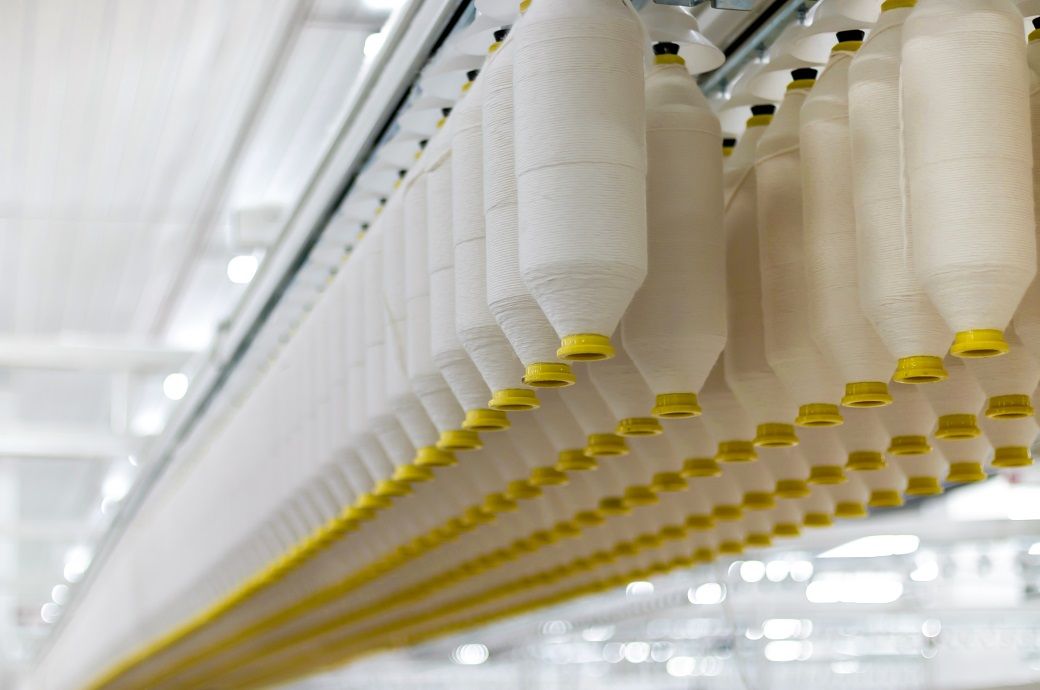
Cumulative French manufacturing output over the July-September quarter was higher by 1.3 per cent year on year (YoY); for the whole industry, it was up 1.1 per cent YoY in the quarter.
Output in the manufacturing of textiles, apparel, leather and related products grew by 2.6 per cent YoY in September this year and dropped by 1.6 per cent quarter on quarter (QoQ) in the July-September quarter, an INSEE release said.
France’s manufacturing output bounced back in September by growing at 0.9 per cent month on month (MoM) after a 1-per cent MoM drop in August.
Output in the manufacturing of textiles, apparel, leather and related items grew by 2.6 per cent YoY in September and dropped by 1.6 per cent quarter on quarter in July-September.
Cumulative manufacturing output in July-September was higher by 1.3 per cent YoY.
The evolution of the manufacturing index between July and August 2025 has been revised downwards, to minus 1 per cent instead of minus 0.7 per cent earlier. The evolution of the index for the whole industry has also been revised downwards, to minus 0.9 per cent from minus 0.7 per cent earlier.
Fibre2Fashion News Desk (DS)
Fashion
After France, Italy squares up to Shein

By
AFP
Published
November 7, 2025
After its troubles in France, Shein faces more opposition in Italy, where the e-commerce giant is wooing shoppers in fashion capital Milan- but where the government and industry are mobilising.
“The textile sector is under attack,” Luca Sburlati, head of Italian fashion trade body Confindustria Moda, told AFP. “Hundreds of thousands of packages arrive in our homes every day. We must react.”
Italy is known for its high-end fashion, the home of global brands including Gucci and Prada, and the industry makes up around five percent of gross domestic product (GDP).
But cheap and cheerful clothes are as popular in Italy as the rest of Europe, including bought through Shein’s ultra-competitive platform.
Founded in China and now based in Singapore, Shein last month staged its first Italian catwalk show in Milan. The same week, the government hosted urgent talks on the impact of “ultra-fast fashion”.
Adolfo Urso, the minister for the “Made in Italy” brand, warned of “an “invasion of low-cost foreign products that harm our producers and put consumers at risk.”
The clothes industry is expected to present a new strategic plan for Italian fashion next week.
At the European Union level, the industry wants an end to the exemption from customs duties for packages worth under 150 euros ($173), following a similar charge in the US.
Critics warn of the environmental impact of clothes so cheap they can be worn once and thrown away, while Shein has also come under scrutiny for conditions at its textile factories.
This week, Italy’s government brought into law a European Union directive that seeks to improve transparency in sales, particularly on the environmental impact of products. Shein has already been sanctioned in this area in Italy and France.
The French government has said it was suspending the platform after outrage over its sale of childlike sex dolls. At the same time, nearly 8,000 people queued for the opening of Shein’s first permanent store, located in Paris’s BHV department store.
In style-conscious Milan, the platform is also hugely popular. “In Milan, you can’t go out if you’re not stylish,” Mattia Trebino told AFP at Shein’s fashion show last month.
The 24-year-old, who wore a faux-crocodile skin jacket, said he receives about four Shein packages every month. “These clothes, you can only wear them once or twice at most. But they’re really cheap,” he said.
Shein’s autumn/winter collection was inspired in part by 1980s Milan, featuring three-piece-suits and faux fur coats.
“The idea was to show that everyone can find their style at Shein- and to respond to our critics,” Luca Raveillon, the show’s French artistic director, told AFP. Gesturing to the collections, he said: “Look, it’s beautiful. It’s good quality, it fits perfectly. “We look great in it, and we can express ourselves with what we wear”- while keeping costs low, as “life is getting expensive”.
Alessia Tresoldi, a 27-year-old Italian influencer sat in the front row, shared images of the show with her one million Instagram followers. Shein “looks at what’s happening on the street”, she told AFP, and described the show as “amazing”.
The website offers a 100% polyester ‘fur’ coat from the show in 15 different colours, starting at 28 euros with free shipping. Boosted by such low prices, European consumers buy 60% more clothing than they did in 2000, and keep it for half as long, according to an October report by consultants The European House-Ambrosetti.
The study’s author, Carlo Cici, said the European fashion industry must innovate more to stand out. “Consumers are very interested in sustainability but aren’t willing to pay for it,” he wrote.
Copyright © 2025 AFP. All rights reserved. All information displayed in this section (dispatches, photographs, logos) are protected by intellectual property rights owned by Agence France-Presse. As a consequence you may not copy, reproduce, modify, transmit, publish, display or in any way commercially exploit any of the contents of this section without the prior written consent of Agence France-Presses.
Fashion
Germany’s Hugo Boss lifts profitability despite 1% dip in Q3 sales

The gross margin of the company rose 100 basis points (bps) to 61.2 per cent, reflecting lower freight costs and sourcing efficiencies, while operating expenses fell 3 per cent due to stringent cost management.
Hugo Boss has reported a 1 per cent YoY sales decline in Q3 2025 but achieved stronger profitability through cost control and sourcing efficiency.
Gross margin rose 100 bps to 61.2 per cent, while EBIT held steady at €95 million (~$109.25 million) with a 9.6 per cent margin.
EPS increased 7 per cent, and free cash flow 63 per cent.
The company reaffirmed its FY25 guidance amid currency headwinds.
Operating profit (EBIT) remained broadly stable at €95 million (~$109.25 million), translating to a 9.6 per cent EBIT margin, up 30 basis points YoY. Earnings per share (EPS) increased 7 per cent to €0.85, supported by stronger financial results and lower net expenses. Free cash flow rose 63 per cent, driven by improved CapEx efficiency, Hugo Boss said in a press release.
Regionally, Americas showed renewed momentum (+3 per cent), while EMEA declined slightly (–2 per cent), with gains in Germany and France offset by weaker UK sales. The Asia/Pacific region fell 4 per cent, mainly due to lower sales in China, though Southeast Asia and Japan showed modest improvement.
“Despite ongoing global market volatility in Q3, we remained focused on our strategic priorities, emphasising long-term brand strength over short-term gains,” said Daniel Grieder, CEO at Hugo Boss. “We achieved meaningful efficiency gains, delivering notable gross margin expansion and streamlined expenses. This is clear evidence of the operational excellence and resilience at the core of our business model. Accordingly, we confirm our 2025 top-and bottom-line guidance while remaining vigilant in navigating ongoing market uncertainties.”
“Our ‘CLAIM 5’ strategy has been pivotal in driving our growth and establishing a strong foundation for long-term success. With our two iconic brands, a robust business platform, and the passion and commitment of our global teams, we are well positioned to create lasting value for our shareholders,” added Grieder.
The Boss Menswear line remained stable YoY, supported by the Beckham X Boss collection launch and the Boss Spring/Summer 2026 Fashion Show in Milan, both of which significantly boosted brand engagement on social media.
By contrast, Boss Womenswear and Hugo reported sales declines of 9 per cent and 5 per cent, respectively, as the company continued to refine product assortments and streamline distribution.
Channel-wise, digital sales advanced 2 per cent, driven by growth on its official website and through digital partner channels. Brick-and-mortar retail remained flat but improved sequentially from Q2, while wholesale declined 5 per cent due to delivery timing, expected to reverse in Q4.
Marketing investments fell 8 per cent to €70 million as the company prioritised high-impact initiatives like the Milan Fashion Show. Administration expenses were 2 per cent lower, highlighting strict overhead control. The company’s trade net working capital rose 11 per cent to €909 million, reflecting higher inventories and reduced payables but remained below Q2 levels.
Hugo Boss reaffirmed its 2025 guidance, expecting group sales and EBIT at the lower end of the ranges due to persistent macroeconomic and currency headwinds. Full-year sales are projected between €4.2 billion and €4.4 billion, while EBIT is forecast between €380 million and €440 million.
The company expects to maintain its EBIT margin within 9-10 per cent, improve efficiency through sourcing and administrative optimisation, and limit capital expenditure to the lower end of €200–250 million.
Fibre2Fashion News Desk (SG)
-

 Tech1 week ago
Tech1 week agoNew diode chain could be used to develop high-power terahertz technologies
-

 Tech7 days ago
Tech7 days agoDisney content has gone dark on YouTube TV. Here’s what customers should know
-

 Business1 week ago
Business1 week agoChocolate’s reign over Halloween is under threat from inflation, tariffs and high cocoa prices
-

 Tech1 week ago
Tech1 week agoHow to Keep Subways and Trains Cool in an Ever Hotter World
-

 Tech1 week ago
Tech1 week agoGiant, Spooky Animatronics Are 75 Percent Off at the Home Depot
-
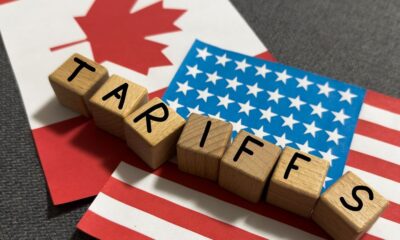
 Fashion1 week ago
Fashion1 week agoUS Senate passes legislation challenging Trump’s tariffs on Canada
-
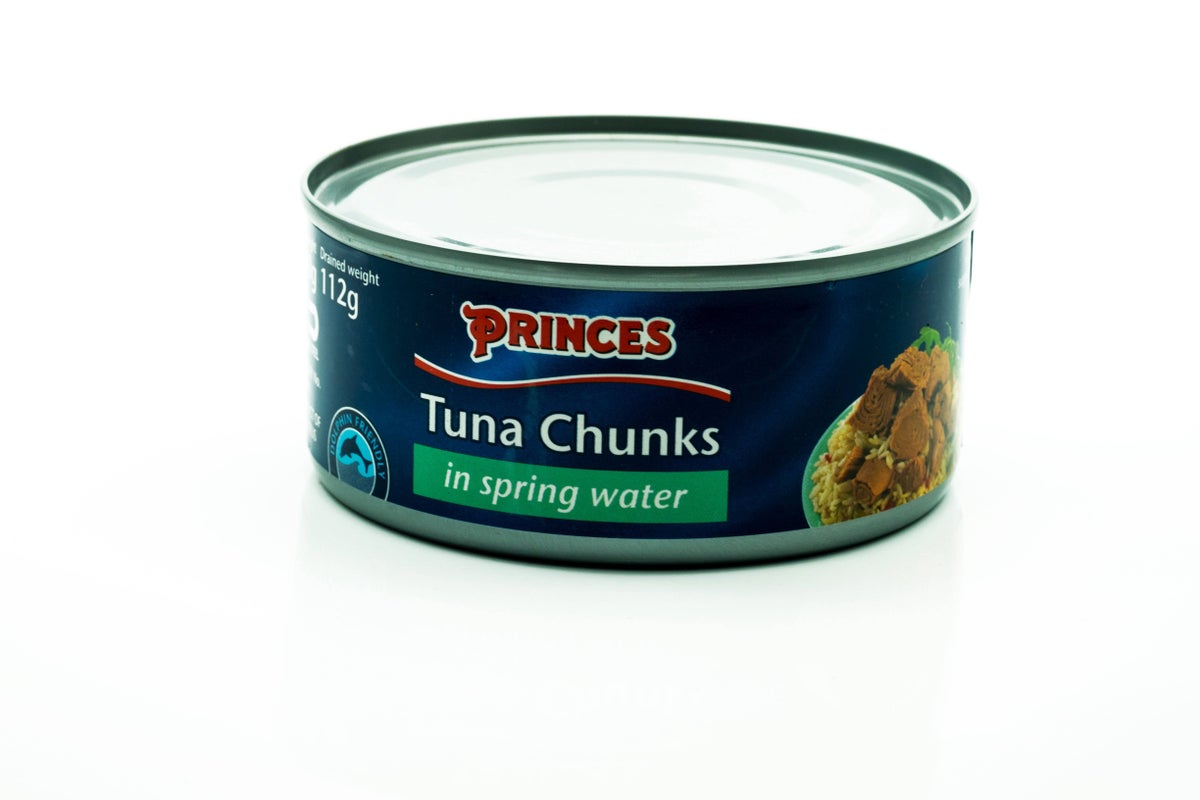
 Business1 week ago
Business1 week agoPrinces Group valued at £1.16bn as food firm launches London float
-
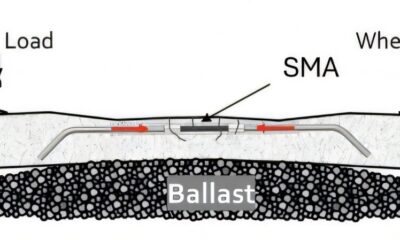
 Tech1 week ago
Tech1 week agoAlloys that ‘remember’ their shape can prevent railroad damage












